
The durability of outdoor furniture is determined primarily by its materials and design. However, proper care, cleaning and maintenance are essential to maximize both its function and visual appeal over time.
One aspect of maintenance is the periodic application of finishes that help to protect the material against UV damage and corrosion. Of course, different materials require unique treatments. Knowing the benefits or drawbacks of each can help you to decide between options.
What are protective finishes for outdoor furniture?
Protective finishes are treatments applied to surfaces to enhance their durability and longevity. These finishes serve as a barrier against various environmental elements that can cause wear and tear, including:
- UV damage
- Moisture
- Temperature fluctuations
- Pests
Finishes and coatings are often applied during the manufacturing process. They act as preventative measures that require little to no additional maintenance. There are also after-market protective finishes that can be applied to deck furniture after purchase. They usually require periodic reapplication to ensure ongoing protection.
By applying finishes or purchasing pre-treated furniture, you can significantly extend the life of your garden furniture and maintain its aesthetic appeal.
IMPORTANT – This list of finishes and treatments is intended to provide a general understanding of their pros and cons. Do not apply them to your furniture without first consulting the manufacturer’s maintenance documentation for the specific materials and production processes used.
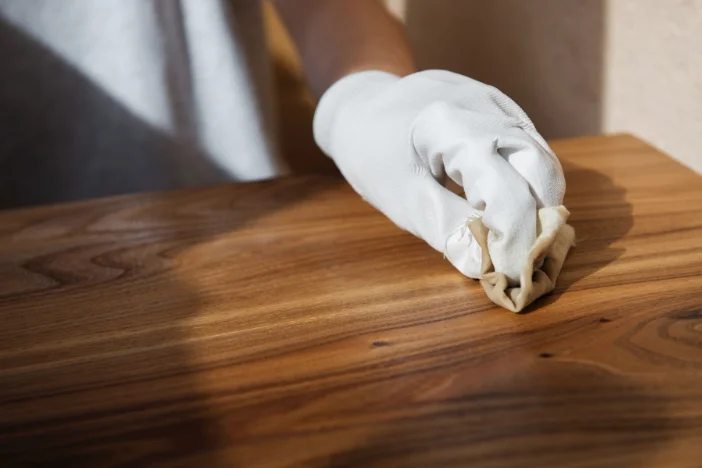
Wood sealers and finish for outdoor furniture
Most outdoor wooden furniture, even if pre-treated, can benefit from annual applications. Pre-treated finishes can wear down over time due to exposure to harsh outdoor elements. Applying after-market finishes helps to reinforce and renew the protective layer, extending the furniture’s life.
Similarly, this type of maintenance can help enhance the wood’s appearance. Stains and varnishes, in particular, are ideal for reviving the look of your patio furniture.
How to treat outdoor wood furniture
Depending on the type of wood, your environment and the amount of effort you want to put in, some options may be more effective or preferable than others. Here are a few of the most common protective finishes for outdoor wood furniture:
Paint
Wet-applied latex paint provides superficial protection for wooden outdoor tables and chairs. While it can block much of the ill effects of sun and water exposure, it can easily scratch and peel over time and leave the underlying surface vulnerable to the elements.
Proper brushing or spraying on a new coat requires a lot of prep work and can result in uneven coloring and texture. However, it is low-cost and can be a quick fix.
Lacquer & Polyurethane
These durable sealants block water from damaging wood and protect it against scratches. However, the finicky application process can be time-consuming, leaving bubbles that harden into a bumpy surface and yellowing may occur over time.
Epoxy
Wooden outdoor surfaces with epoxy finishes are extremely durable and easy to clean. They can withstand harsh elements and scratches for years without deteriorating, making epoxy a great choice for flooring and countertops where there is high use and exposure. It has a high gloss appearance which may not be as aesthetically pleasing for patio furniture.
Like polyurethane, it has a difficult application process, although one coat will last much longer.
Varnish
Sealing wooden furniture with varnish will prevent moisture from seeping in and protect the natural color of the woodgrain by absorbing UV rays. Wood sealers, in general, help to minimize rot, warping and cracking. A coat of varnish made with linseed oil is easy to apply but it’s less effective than polyurethane sealants and requires more frequent applications as it may peel and chip.
Stripping old varnish and sanding the wood before applying a new coat may deter some from choosing this finish option. For the harshest environments, a marine-grade spar varnish made with tung oil and phenolic resin may be the best choice, since it not only protects wood but gives it flexibility and UV-protection.
Stain
Traditional stains soak into the wood and slowly dry over time. They are available in a wide variety of colors and allow you to change the appearance of the natural woodgrain. They’re UV-resistant and can contain fungicides to prevent mildew. While they don’t provide the same surface protection as sealants, they don’t peel or flake.
Stains are a low-cost option and easy to apply but may need to be applied annually. Oil-based stains require ventilation since they contain harmful volatile organic compounds (VOCs).
Oil
Like stains, oils penetrate the wood and prevent it from absorbing water. They also act as barriers to the negative effects of UV light. They’re clear and enhance the color of natural woodgrains, allowing them to show through without leaving a film on the wood surface that can crack or chip. Remove any sealant or varnish before applying oil. Teak can be oiled to maintain its natural honey brown woodgrain or left to patina to a silvery grey appearance.
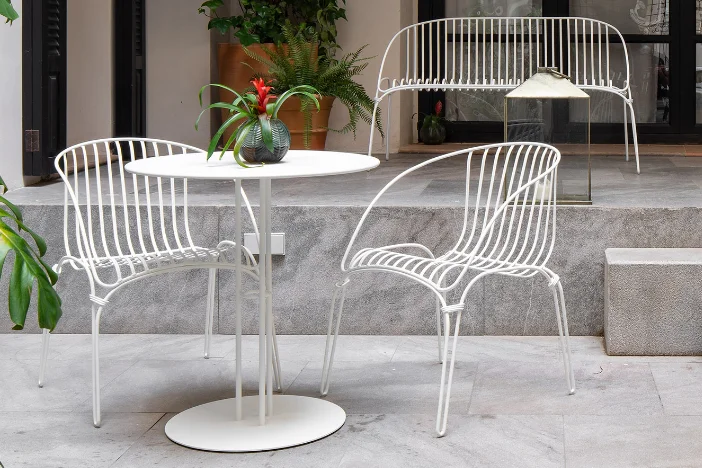
Protective coatings for metal patio furniture
Many metal outdoor furnishings come with protective layers pre-applied. However, their longevity and luster can be improved by applying various finishes. Though metal may not be susceptible to pests like wood is, it can rust, and texture and color can begin to degrade.
By applying these finishes, you not only reinforce the existing protection but also maintain the aesthetic appeal of your furniture.
How to treat outdoor metal furniture
Regular use of sealants, paints or specialized metal treatments can prevent rust, reduce wear and tear and keep your outdoor furniture looking new for years to come.
Powder-Coating
Electrostatic powder-coating metal with dry paint and curing it in an oven provides uniform color and texture and protects against surface corrosion. It creates a tough, protective layer that resists chipping, scratching and fading. Even if a powder coat gets scratched, it’s easily mended with matching touch-up paint. It’s usually applied to aluminum but stainless steel can be powder-coated too.
Anodizing
This electrochemical surface treatment improves resistance to corrosion and scratches. Frequently used to protect metal frames made of aluminum. It offers more protection against wear and tear while allowing for a variety of color finishes.
Polyurethane
To protect surface paint or minimize the degradation of a metal’s texture and color, a thin layer of clear polyurethane can be applied via light brushing or spraying.
Oil
A thin layer of acid-free oil can help prevent rust film from accumulating on the surface of raw metals such as stainless steel. It can be applied early on and frequently, especially if corrosion-resistant elements (e.g. chromium) are absent.
Wax
Even if metal patio furniture is powder-coated, it doesn’t hurt to apply a little boat or auto wax to help water bead and roll right off. This finish can also help mask fine scratch marks and other small imperfections to improve the appearance of your metal furniture.
Wet Paint
Like wood, wet-applied latex paint offers a superficial layer of protection for metal deck furniture. While it effectively shields the furniture from the adverse effects of sun and water exposure, it is prone to scratching and peeling over time.
Applying a fresh coat of latex paint requires thorough preparation and can lead to uneven coloring and texture if not done carefully.
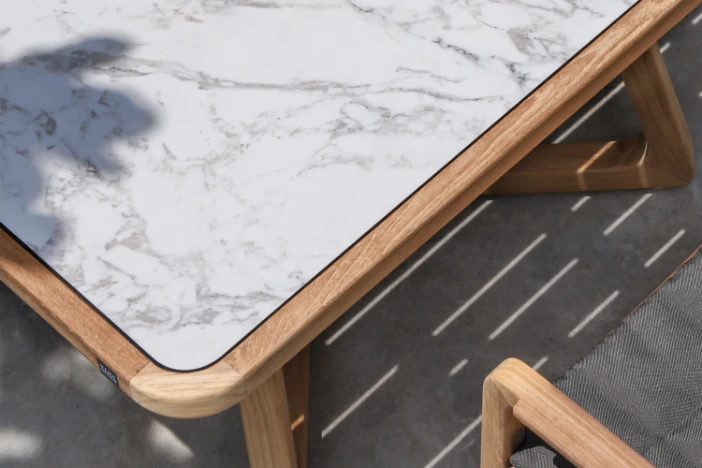
Resin and high-pressure laminate finish
Synthetic and laminated materials used for garden furniture typically have protective agents that are inherent in the composition of the materials themselves. The protective agents embedded in these materials ensure they retain their structural integrity and appearance over time, without the need for frequent reapplications of protective coatings. This built-in protection makes synthetic and laminated furniture highly resilient and easy to care for
The most that any applied resin or high-pressure laminate finish (e.g. wax) can usually do is perhaps increase the gloss or luster of the surface.
How to protect outdoor textiles
Protecting garden furniture fabric is essential to ensure its longevity. Fabrics that are typically used indoors can improve their resistance to the elements through the use of Scotchguard or similar water and stain repellant. However, using a more appropriate textile like acrylic or olefin is recommended.
Continue to the next section of our materials guide to learn more about the best fabrics for outdoor use.

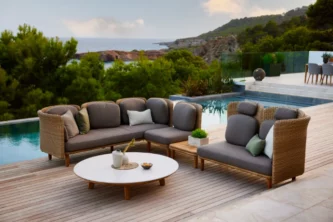
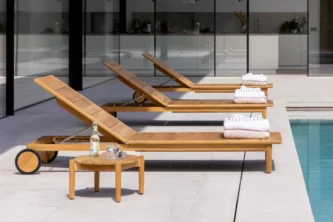
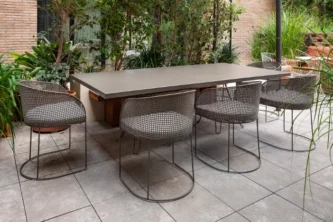
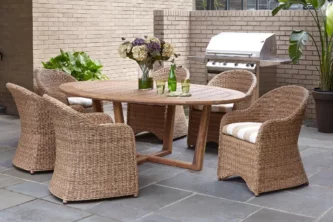
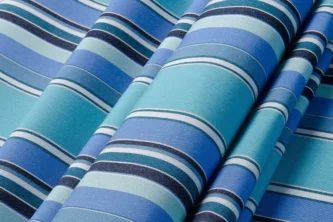
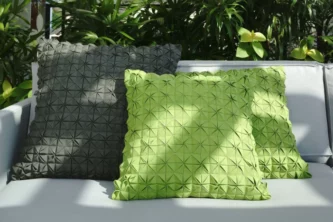





Leave a Reply